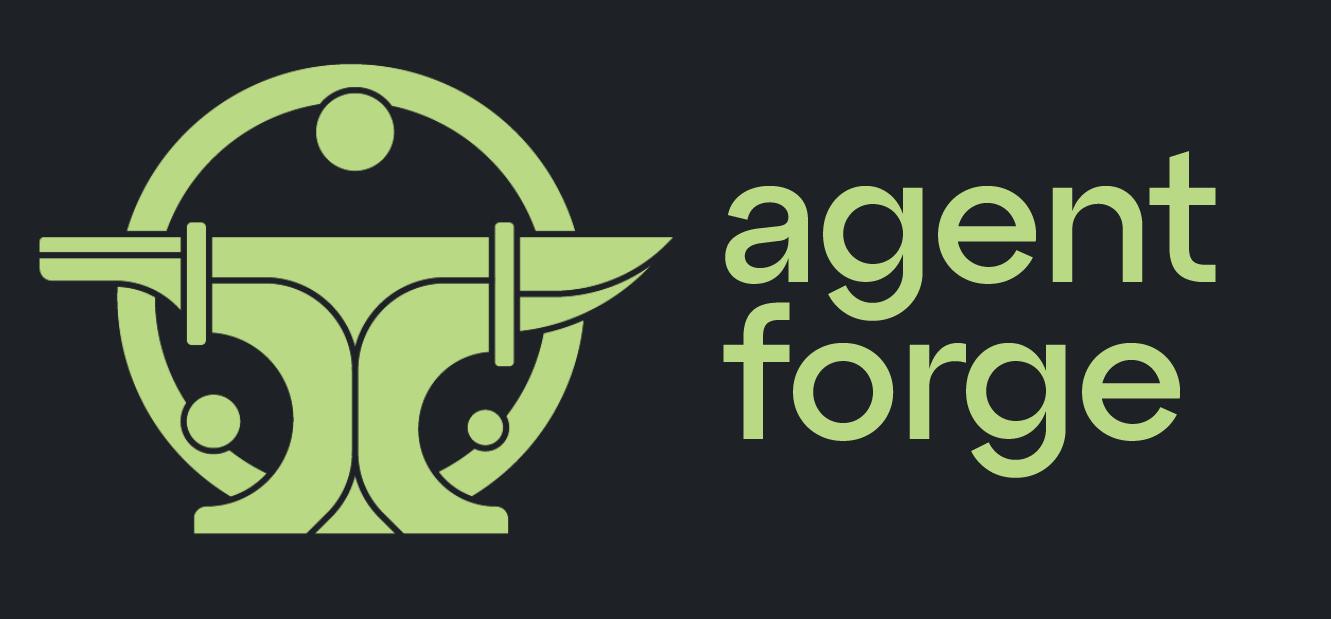AgentForge is a low-code framework designed for rapid development, testing, and iteration of AI-powered autonomous agents and cognitive architectures. Compatible with a range of LLM models—including OpenAI, Google's Gemini, Anthropic's Claude, and local models via Ollama or LMStudio—it offers the flexibility to run different models for different agents based on your specific needs.
Whether you're a newcomer seeking an easy entry point or a seasoned developer aiming to build complex cognitive architectures, AgentForge provides the tools you need to craft intelligent, model-agnostic, and database-flexible autonomous agents.
Easily build agents or cognitive architectures (multi-agent scripts) with the following AgentForge functionality:
- Customizable Agents: Tailor agents to fit your specific use cases with ease.
- Custom Tools & Actions: Extend functionality by creating custom tools and actions.
- Dynamic Prompt Templates: Utilize flexible prompt templates that adapt to various contexts.
- LLM Agnostic Agents: Run different agents with different LLMs as per your requirements.
- On-The-Fly Prompt Editing: Modify prompts in real-time without restarting the system.
- OpenAI, Google & Anthropic API Support: Seamlessly integrate with popular LLM APIs.
- Open-Source Model Support: Leverage local models through Ollama and LMStudio.
Get started with AgentForge in just a few steps:
-
Install AgentForge via pip:
pip install agentforge
-
Set Up Environment Variables:
-
For OpenAI:
export OPENAI_API_KEY='your-openai-api-key'
-
For Anthropic:
export ANTHROPIC_API_KEY='your-anthropic-api-key'
-
-
Run a Basic Agent:
Create a Python file named
echo_agent.pyin your project root:from agentforge import Agent class EchoAgent(Agent): pass # The agent_name is automatically set to 'EchoAgent'
Inside the
.agentforge/agents/directory, create a YAML file namedEchoAgent.yaml:Prompts: System: You are an assistant that echoes the user's input. User: |+ {user_input}
Create a separate Python script (e.g.,
run_agent.py) in your project root to import and run your custom agent:from echo_agent import EchoAgent # Initialize the agent agent = EchoAgent() # Run the agent with an input message response = agent.run(user_input="Hello, AgentForge!") print(response)
Ensure your virtual environment is activated and run the script:
python run_agent.py
Assuming the agent is connected to an LLM, the output might be:
Hello, AgentForge!Note: The actual response will depend on the LLM used and its configuration. This is just a very crude example.
Welcome to the AgentForge framework documentation. This comprehensive guide supports you whether you're just getting started or diving deep into custom configurations and advanced features.
- Installation Guide: Step-by-step instructions to install AgentForge.
- Prerequisites Guide: Details all pre-installation requirements and dependencies.
- Using AgentForge: Learn how to run agents, create custom agents, and build cognitive architectures with examples.
- Troubleshooting Guide: Find solutions to common issues and platform-specific problems.
- Agents: Dive deep into the world of agents. Learn how they operate, respond, and can be customized.
- Cognitive Architectures: Explore multi-agent scripts that coordinate various agents to achieve specific goals.
- LLM API Integration: Understand how AgentForge connects with various Large Language Model (LLM) APIs.
- Settings: Delve into the model, storage, and system configurations to tweak the behavior of the system.
- Personas: Utilize personas to encapsulate information accessible to the agents, acting as a resource of knowledge.
- Tools & Actions: Discover the system's toolbox and learn how to choreograph tools into actionable sequences.
- Utilities: Explore utility functions and tools that enhance the system's capabilities.
Feel free to open issues or submit pull requests with improvements or bug fixes. Your contributions are welcome!
We're on the lookout for a UI/UX collaborator who's passionate about open-source and wants to help develop a front-end for this framework. This isn't a job offer, but rather an invitation to be a part of something cool. Interested? We'd love to chat! (See the Contact Us section below for details.)
If you're keen on contributing or just want to reach out, here's how to get in touch:
- Email: contact@agentforge.net
- Discord: Join our Discord Server
This project is licensed under the GNU General Public License v3.0. See LICENSE for more details.





